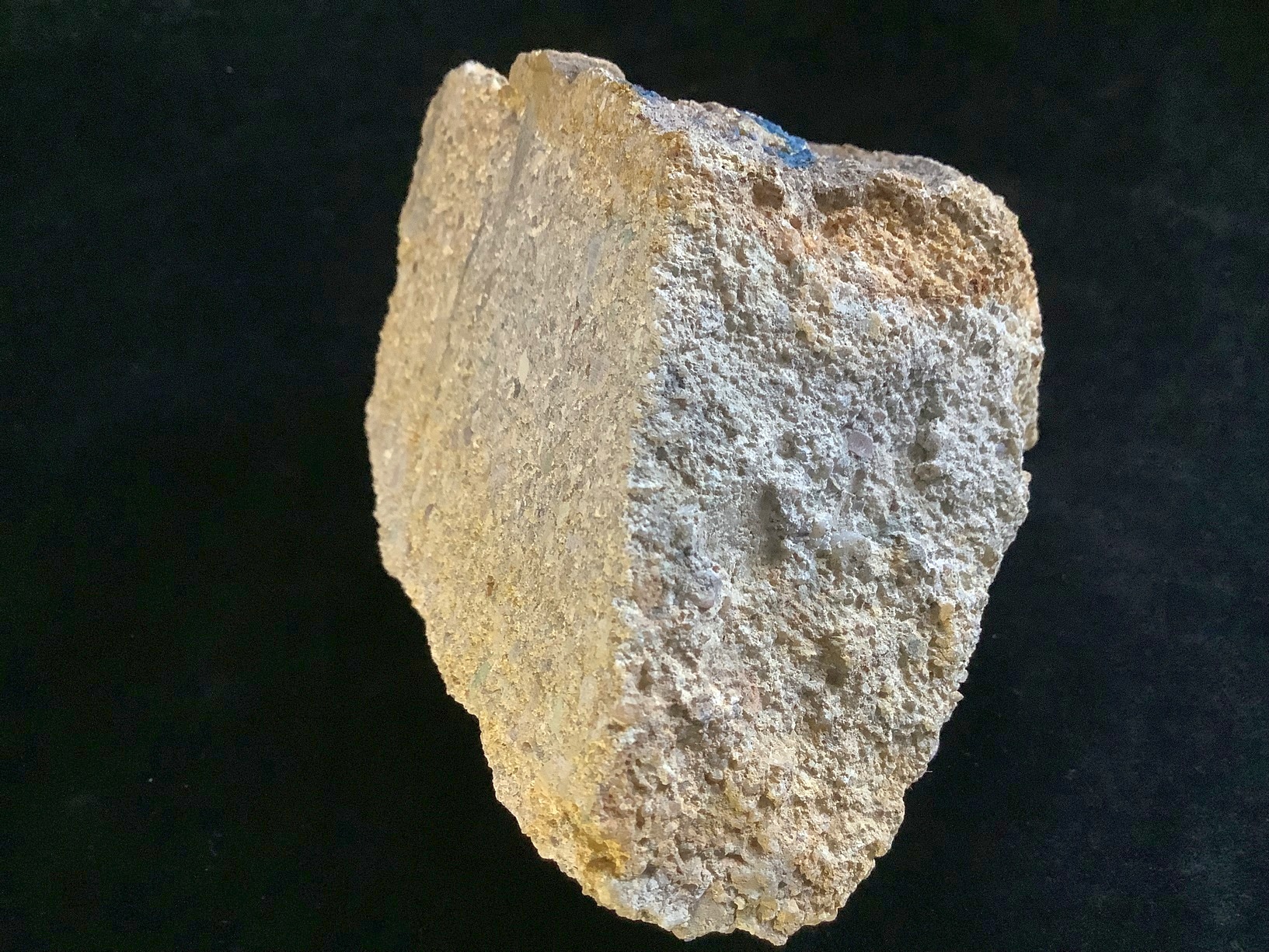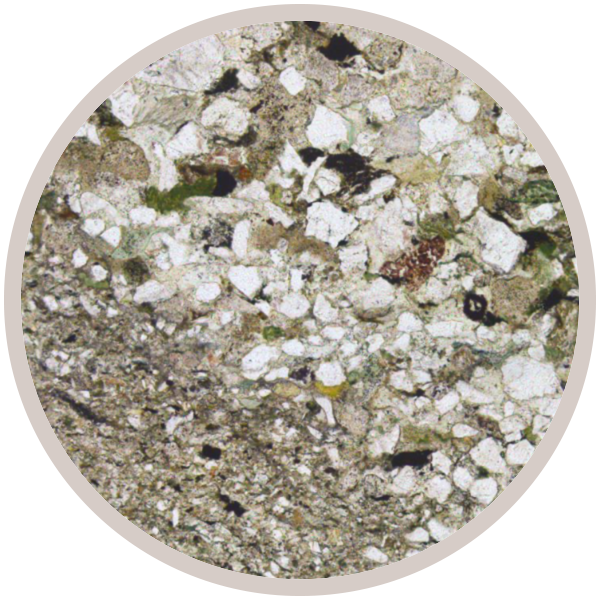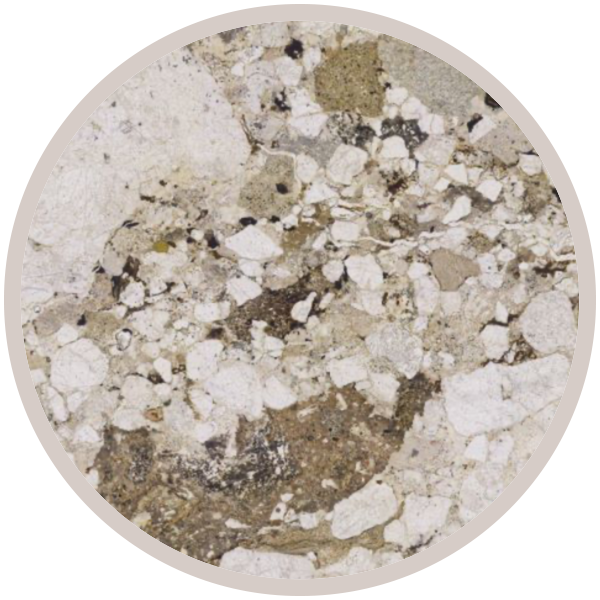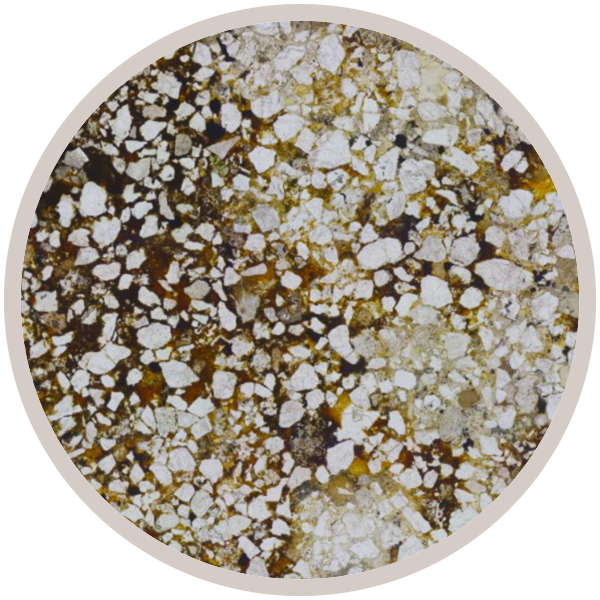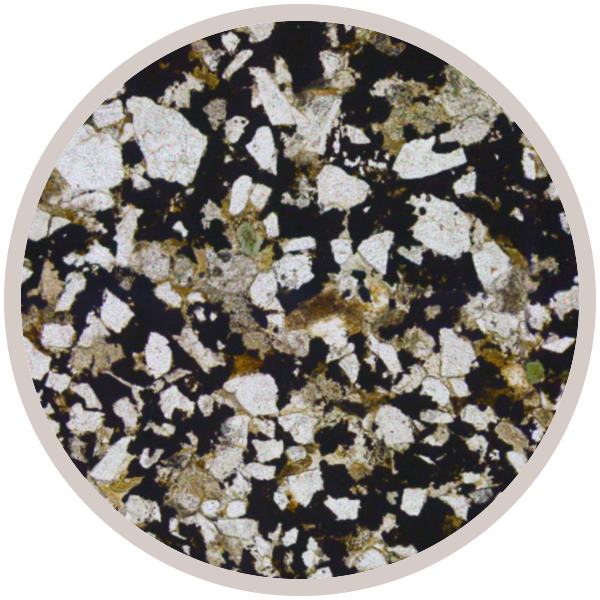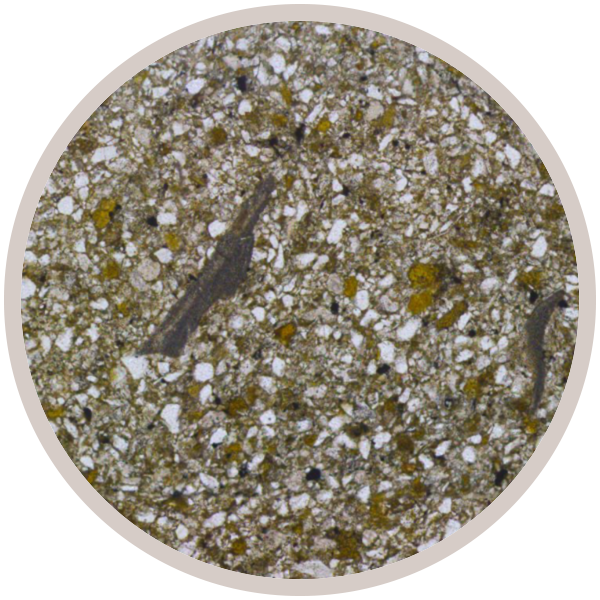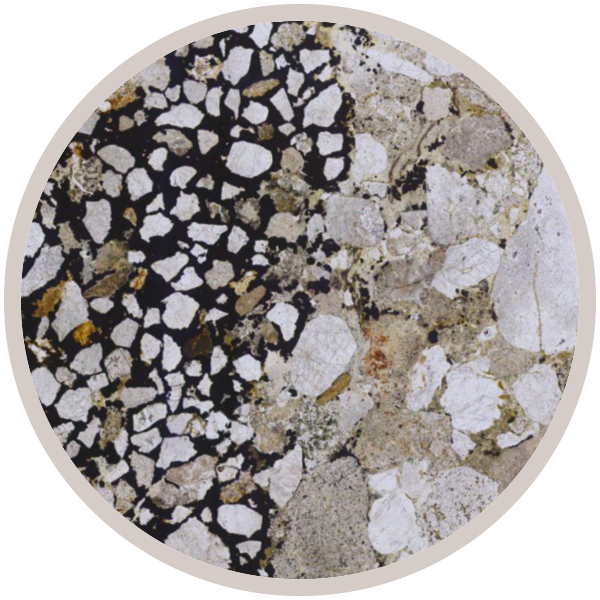
Fact sheet
A coarse Carboniferous sandstone collected from Doulton's Claypit. Sedimentary features in the exposure indicate that this was a sandstone deposited in a river channel.
The sandstones were deposited in a low-lying, deltaic environment when the region lay near the equator. These deltas were thickly forested with trees whose fossil remains can be found in some of the strata.
In thin section, the first feature of note is the centimetre-scale layering - the original sedimentary bedding. The finer-grained layer in the centre of the section is distinguished by black material between the grains. The rock has a coarse, typical fragmentary, detrital texture. Clear, colourless quartz grains are mainly rounded to subangular, several show undulose (patchy) extinction under crossed polars, an indication of weak strain in the crystals. Feldspars are also present, generally with dusty alteration. Many rounded single grains in PPL appear very different under crossed polars, being coarsely to finely polycrystalline, made up of numerous much smaller grains of quartz, with rare feldspars and micas. These are rock fragments, many of them sandstones; in some the quartz grains are clearly strained and recrystallized, indicating that there were metamorphic rocks (metaquartzites, schists or gneisses). Rarely, darker greenish or brownish clasts occur, probably of more mafic igneous rocks.
Much of the dark brown matter along grain boundaries is probably a mixture of iron oxides or similar insoluble material. There are also some green patches, which may be chlorite. The concentration of opaque iron oxides in the central layer may imply this was an originally iron-rich layer with a concentration of iron-rich minerals that broken down to leave this iron oxide residue. Alternatively, these iron oxides could have been precipitated from iron-bearing fluids that percolated along these grain boundaries after the rock was deposited. Such zones of iron oxide precipitation are common in many Carboniferous sandstones, notably the popular 'York' paving stone that graces many town centres in the UK.
This sample was collected as part of the 'Macro to Micro' project.
This Collection showcases the geodiversity of a classic geological site: the Saltwells National Nature Reserve in the West Midlands.
As well as displaying thin section and hand specimen views along with information setting them in the context of their landscapes, we also include perspectives and creative responses to the geological heritage of the sites from the local community.
| Explore the stories of the rock layers at Saltwells and Wren's Nest NNRs, designed by students at King Edward VI School, Stourbridge: |
This Collection was made possible by funding awarded to the 'Macro to Micro' project by the Natural Environment Research Council (NERC) under their 'Growing Roots' scheme.
